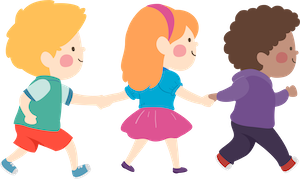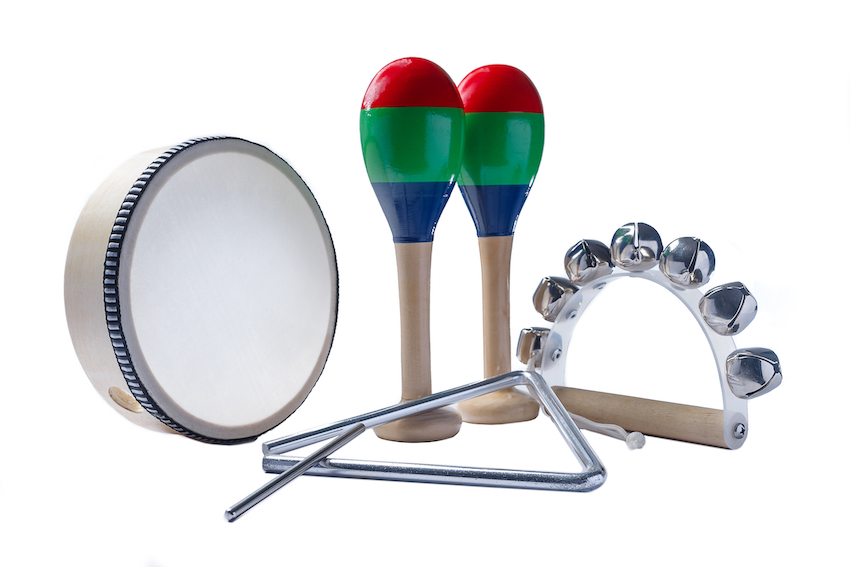Y2. Lesson 14. Dynamics - adagio & allegro
Prior learning: Fast & slow
Duration: 30 minutes
Materials:
Keywords: Beat, rhythm, singing, chanting, partners, rhymes, circle games.
Difficulty: ![]()
Prepare
Present
Adagio & allegro
Practise
 Allegro, an Italian word, translates to 'lively' or 'cheerful'. It finds its place in musical notation as an instruction for the piece to be performed at a moderately fast tempo, radiating a vibrant and joyful quality. Tempos are in beats per minute (BPM), with allegro usually indicated on a metronome within the 120-156 BPM range.
Allegro, an Italian word, translates to 'lively' or 'cheerful'. It finds its place in musical notation as an instruction for the piece to be performed at a moderately fast tempo, radiating a vibrant and joyful quality. Tempos are in beats per minute (BPM), with allegro usually indicated on a metronome within the 120-156 BPM range.
Adagio, also an Italian word, translates to 'slowly'. This term signifies that the composition should be executed unhurried and relaxed. The tempo at which a musical composition unfolds greatly influences its overarching ambience and emotional tone. The tempo generally places adagio within the range of 66-76 BPM.
 Melodic development
Melodic development
![]() Students discover a new song for their repertoire.
Students discover a new song for their repertoire.
- Teach the song using a neutral syllable with a measured cadence and ask the class to repeat it back to you.
- When secure, teach the words - as this is a short song, this will not take long.
- When secure, ask students to space themselves around the room.
- Lead the class in singing the song as students also walk to the beat.
- When finished, repeat the game using other movement words, such as hop, skip and jump.
- Ask students to choose their own movement words!

 Rhythmic development
Rhythmic development
![]() Students read and clap back a series of notated rhythm patterns.
Students read and clap back a series of notated rhythm patterns.
- Students are seated and attentive.
- Project the rhythm patterns on the board.
- Ask the class to read aloud the time names of the first line.
- Students should then clap the first line.
- When secure, continue the process for the next line.
- This is an excellent exercise to reinforce prior learning of time names ta, ti-ti, tika tika and the rest, za.
 Questions
Questions
- How many beats are in each measure?
- What does the barline do?
- What does the double barline do?
- How many sounds are on the beat with ta?
- How many sounds are on the beat with ti-ti?
- How many sounds are on the beat with tika tika?
 Creative movement
Creative movement
![]() Students respond to music using their imagination and creative movements.
Students respond to music using their imagination and creative movements.
Allegro
- Racing Cars: Encourage students to imagine they are speedy race cars. They can bend at the waist, pretend to grip a steering wheel, and make quick, sharp movements as if maneuvering through a race track.
- Bouncing Kangaroos: Students can hop and jump like kangaroos, using quick and bouncy movements. They can also try alternating between small hops and big leaps to match the rhythm of the music.
- Marching Soldiers: Students can march on the spot with exaggerated, quick steps as if they are soldiers on a mission. They can swing their arms and lift their knees high, maintaining a strong and determined posture.
- Busy Bees: Invite students to mimic the rapid movements of bees buzzing around. They can dart from place to place, making quick, zigzagging motions and buzzing sounds to match the energy of the music.
- Rainstorm: Students can pretend to be raindrops falling from the sky. They can move quickly and sporadically, using their bodies to mimic the randomness of raindrops during a fast-paced rainstorm.
Adagio
- Flowing Rivers: Students can pretend to be gentle streams or rivers flowing slowly. They can move their arms in fluid motions and take slow, deliberate steps as if they are water winding through a landscape.
- Blossoming Flowers: Encourage students to embody the growth of a flower. They can start as tiny buds, slowly stretching their bodies and arms upwards as the music plays. This can help them explore graceful and deliberate movements.
- Sleepy Butterflies: Imagine butterflies waking up from their slumber. Students can move in slow, fluttering motions, stretching their arms like wings and moving softly as if exploring the world after a long rest.
- Ocean Waves: Have the students emulate the motion of ocean waves. They can sway and ripple their bodies, moving their arms in a wave-like fashion to mimic the ebb and flow of the water.
- Starry Night: Students can pretend to be stars or constellations coming to life. They can use slow, twinkling movements to imitate stars shimmering in the night sky.
 Listening
Listening
![]() Students listen to two excerpts of music and determine if they are played adagio or allegro.
Students listen to two excerpts of music and determine if they are played adagio or allegro.
- Students are seated and attentive.
- Teach that if the tempo of a piece of music is slow then the term used in music is adagio, an Italian word.
- Likewise, if the tempo of a piece of music is fast then the Italian word allegro is used.
- Play the first piece of music and ask the class if the tempo was adagio or allegro.
- Repeat the question with the second piece of music.
 Visual learning
Visual learning
![]() Students discover where Italy can be found on a map.
Students discover where Italy can be found on a map.
- Explain that many words used in music come from a country called Italy, including adagio and allegro, forte and piano.
- Explain to students that they will discover where Italy is to be found on a world map.
- Project the world map and ask if anyone knows where Italy is.
- Point to Italy [in red].
- Explain that Italy is divided up into regions, like Australia is divided into states.
- Ask where Australia can be found on the world map.
- Point to Australia then project the map of Australia.
- Ask students which state they are in and ask a student to come forward and point to it.
 Instruments
Instruments
![]() Students experiment with adagio and allegro using untuned percussion.
Students experiment with adagio and allegro using untuned percussion.

- Have a good selection of untuned percussion instruments on your desk. These may include triangles, guiros, hand drums, shakers and tambourines.
- Discuss with the class the meaning of adagio and allegro.
- Ask a volunteer to come forward and choose an instrument.
- Explain that they will shake/strike the instrument eight times in a row.
- Ask the class whether the student should play the instrument slowly [adagio] or quickly [allegro].
- The student will then shake/strike the instrument accordingly.
- Repeat with other volunteers until time permits.
 Part work
Part work
![]() Students create and play a rhythmic ostinato using untuned percussion instruments.
Students create and play a rhythmic ostinato using untuned percussion instruments.
- Students select a simple hand-held percussion instrument, such as a triangle, clap stick, wood block, maracas, etc.
- Remind students about rhythmic ostinatos, give examples, and demonstrate several patterns.
- With students seated, sing or play a well-known classroom song such as Ickle Ockle, Kangaroo, etc.
- Lead the class in an ostinato pattern, which students should copy on their chosen instrument.
- When secure, play or sing the song and ask students to play the ostinato pattern with you.
- Finally, students should sing the song and play the ostinato together.
Students section

Try these quick questions!
 Assess
Assess
Suggested lessons
Y1. Beat II

Y1. Beat III

Y1. Beat IV

